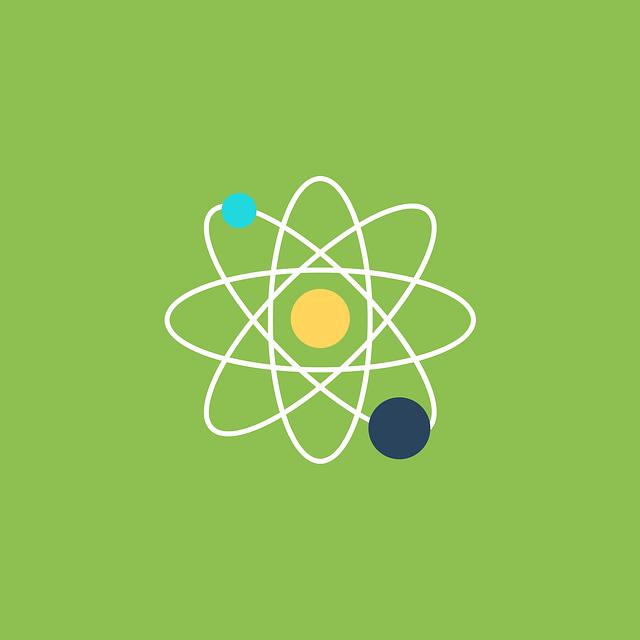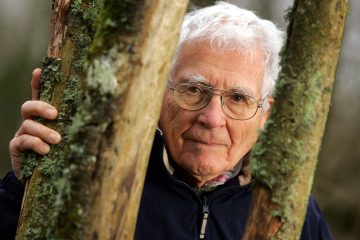Table of Contents
- Pioneering Gaia Theory and Its Impact on Environmental Science
- Revolutionizing Climate Change Perspectives Through Innovative Research
- Contributions to Atmospheric Science and Technological Advancements
- James Lovelock’s Influence on Sustainable Solutions and Policy Development
- Legacy of Innovation: Inspiring Future Environmental Scientists
- Q&A
- The Conclusion

Pioneering Gaia Theory and Its Impact on Environmental Science
The Gaia Theory, proposed by James Lovelock in the 1970s, revolutionized how scientists view Earth, framing it as a single, self-regulating ecosystem. This groundbreaking theory suggests that the Earth functions as a living organism, with various natural components interacting harmoniously to maintain conditions conducive to life. Essentially, Lovelock’s work highlighted the interconnectedness of biological systems with the geophysical and chemical properties of the planet. The implications of this theory have been profound, reshaping scientific approaches to environmental challenges and promoting a more integrated perspective on ecological systems.
In environmental science, Lovelock’s Gaia Theory contributed significantly to understanding systems ecology and the balance necessary for sustaining life. It shifted focus from isolated components to the planet-wide processes that interlink atmosphere, hydrosphere, biosphere, and lithosphere. Some key concepts influenced by this include:
- Homeostasis: Essential for maintaining the Earth’s stability through self-regulating mechanisms.
- Biodiversity: Viewed as a vital component for resilience and adaptability in ecosystems.
- Climate regulation: Highlighting the role of organisms in stabilizing climate through biological processes.
Lovelock’s theory also spurred dialogues and debates that have catalyzed further research and exploration in fields like climate science and geoengineering. The newfound awareness prompted by Gaia shifted public perception and policy, encouraging sustainable practices and informing key environmental policies worldwide. Let’s look at a simplified assessment of Gaia Theory’s impact in terms of its scientific and societal influence:
| Aspect | Influence |
|---|---|
| Scientific Research | Enhanced understanding of Earth’s systems and feedback loops |
| Environmental Policy | Integration of holistic approaches in policy-making |
| Public Awareness | Increased consciousness about the interdependence of all life forms |

Revolutionizing Climate Change Perspectives Through Innovative Research
At the heart of James Lovelock’s accomplishments lies his pioneering concept, the Gaia Hypothesis. This revolutionary perspective transformed how scientists and environmentalists view our planet, suggesting that Earth functions as a singular, self-regulating system. Gaia posits that living organisms interact with their inorganic surroundings to maintain conditions conducive to life, challenging the traditional view of Earth as merely a passive backdrop to human activity. Lovelock’s hypothesis has inspired decades of research and discussions, redefining our understanding of planetary resilience and ecological balance.
Another significant achievement of Lovelock’s career is his work on atmospheric detection. In the 1960s, he invented the electron capture detector (ECD), a groundbreaking device that enabled the detection of greenhouse gases at incredibly low concentrations. This invention was pivotal in raising global awareness about the impact of industrial chemicals, such as chlorofluorocarbons (CFCs), on the ozone layer. The ability to identify and quantify these compounds pushed environmental research to new frontiers, leading to pivotal policies like the Montreal Protocol, which aimed to curb their harmful emissions.
| Innovation | Impact |
|---|---|
| Gaia Hypothesis | Changed scientific understanding of Earth as an interconnected system. |
| ECD | Facilitated global policies targeting atmospheric pollutants. |
Beyond his scientific pursuits, Lovelock has been an ardent advocate for environmental sustainability, urging humanity to reconsider its relationship with nature. His vision prompted interdisciplinary collaborations, uniting researchers from fields such as biology, geology, and chemistry to tackle complex ecological challenges. Through his thought-provoking publications and public talks, Lovelock has consistently emphasized the importance of innovative strategies, pushing societies to adopt forward-thinking approaches toward climate mitigation and sustainable development.

Contributions to Atmospheric Science and Technological Advancements
James Lovelock’s pioneering work has significantly shaped the field of atmospheric science, bringing forth groundbreaking concepts that have revolutionized our understanding of Earth’s environment. His most renowned contribution is the development of the Gaia Theory, which postulates that Earth functions as a self-regulating, interconnected system. This theory not only provided a holistic view of the planet but also influenced environmental policies and conservation efforts globally. By viewing Earth as a single entity, Lovelock encouraged a new perspective on climate change, emphasizing the need for humans to recognize their role within this delicate system.
Lovelock’s contributions weren’t limited to theoretical advances. His invention of the electron capture detector in the 1950s marked a pivotal advancement in atmospheric technology. This device played a crucial role in detecting and measuring trace atmospheric chemicals, leading to discoveries such as the presence of CFCs (chlorofluorocarbons) and their destructive impact on the ozone layer. Lovelock’s innovation was instrumental for the atmospheric science community, enhancing our ability to monitor environmental pollutants and informing pivotal policy decisions around air quality and emissions.
In addition to his technological developments, Lovelock advocated for innovative approaches to climate mitigation and adaptation. His forward-thinking proposals often sparked debate but consistently pushed the boundaries of conventional scientific and environmental thought. For instance, Lovelock proposed utilizing geoengineering as a potential tool to combat climate change, advocating for the exploration of ideas such as artificial stratospheric aerosol injection. By challenging existing paradigms, Lovelock has persistently urged the scientific community and policymakers to embrace creativity and resilience in the face of environmental uncertainty.

James Lovelock’s Influence on Sustainable Solutions and Policy Development
James Lovelock’s visionary outlook has significantly shaped the discourse around sustainability, spurring innovations that bridge environmental science and policymaking. His Gaia theory, suggesting that Earth functions as a self-regulating system, has profoundly influenced sustainable thinking. This concept urges a holistic view, emphasizing the interconnectedness of ecological symbiosis and the necessity to preserve it. As a result, policymakers have increasingly adopted an integrated approach to environmental challenges, prioritizing unified strategies over isolated measures.
In policymaking circles, Lovelock’s work serves as a pivotal reference for arguing the urgency of climate resilience. His insights have catalyzed a shift toward sustainable energy sources and stricter environmental regulations. Influential in setting the stage for international agreements, his theories underscore the significance of maintaining planetary health amidst industrial progress. Countries and organizations championing Lovelock’s ideals often showcase:
- Renewable energy integration
- Circular economy models
- Ecosystem restoration projects
- Biodiversity conservation efforts
Lovelock’s legacy also thrives in academic and research domains, promoting cross-disciplinary collaboration. Educational programs inspired by his work emphasize the importance of innovative thinking in addressing ecological crises. This fusion of knowledge across fields has illuminated pathways for scalable, sustainable solutions. Universities have incorporated his philosophies into curricula, fostering a generation of environmentally conscious leaders. Furthermore, his ideas continue to propel advancements in climate models, enabling more accurate predictions and effective responses to environmental changes.

Legacy of Innovation: Inspiring Future Environmental Scientists
The transformative work of James Lovelock has left an indelible mark on the landscape of environmental science, framing a path for budding researchers and ecologists. His groundbreaking Gaia theory, which conceptualizes Earth as a self-regulating system, challenges traditional perspectives and invites emerging scientists to explore the intricate interplay between living organisms and their environments. Lovelock’s approach encourages a holistic understanding of ecological processes, empowering new generations to view ecosystems not as isolated phenomena but as integral parts of a dynamic planetary system.
A distinctive aspect of Lovelock’s legacy lies in his inventive spirit, evident in his creation of the electron capture detector. This invention revolutionized environmental monitoring by enabling the detection of trace amounts of chemical compounds in the atmosphere, leading to critical breakthroughs in understanding air pollution and ozone depletion. Such practical innovations inspire young environmental scientists to meld creativity with scientific rigor, pushing forward technologies to confront contemporary ecological challenges.
Inspiring future environmental scientists, Lovelock’s career reflects the power of interdisciplinary collaboration. By building bridges between chemistry, biology, and earth sciences, he invites up-and-coming researchers to transcend traditional academic boundaries. This approach fosters innovation, promoting the synthesis of diverse scientific methodologies to address pressing global concerns. Through his body of work, Lovelock not only illuminates past accomplishments but provides a compass guiding the next wave of environmental pioneers.



0 Comments